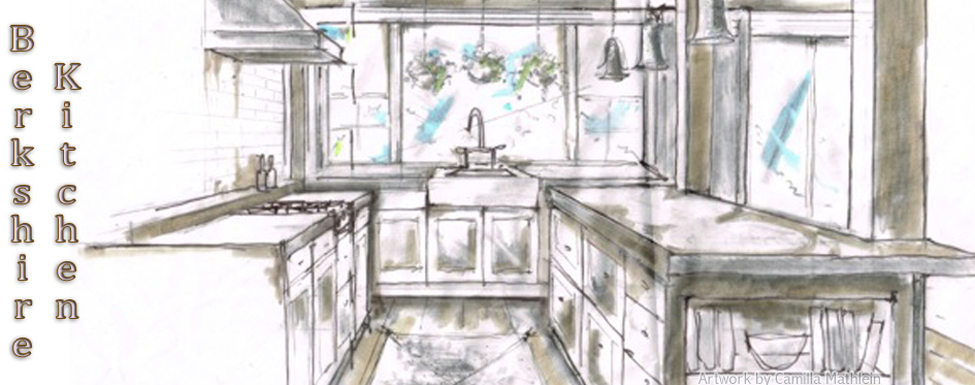Ratatouille Pie
One way to use up a lot of summer vegetables is to make ratatouille. This vegetable ragout or stew is very typical of southern France. The name comes from the French verb “touiller” which means to mix or stir. The most familiar version from Nice - ratatouille niçoise - is made with eggplant, zucchini, onions, peppers and tomatoes simmered in olive oil and herbs. It can be served hot or cold, as a side dish, on its own or even used like a bruschetta on top of toasts.
Although I make ratatouille every summer, this year I experimented by making a mixture that was less soupy and baked it in a pie crust, similar to making a tomato pie. It took several attempts before perfecting the process but every version was delicious! Because the vegetables release a lot of steam as they bake, it’s important to have a top crust that allows the moisture to dissipate so the crusts won’t end up gooey. One solution is a lattice-top, although any top crust with open cutouts would work.
In a totally unexpected turn of events with our self-isolating to avoid COVID, my husband is becoming somewhat “domesticated!” How this relates to ratatouille pie is that he insisted on being the one to weave the lattice-top in my second iteration of the recipe… not an easy task for someone that has never baked anything in his life. I have to admit, though, that his experimentations came up with some valuable tips.
If you’re going to top your pie with a crust with just a few vent holes cut out, then you can fill the pie while the vegetables are still hot. But my husband realized that in order to be able to form a woven lattice top, you need to first let the vegetables cool. Trying to form a lattice while the veggies are still hot softens the dough and makes it nearly impossible to weave.
I lightly sauté the different vegetables separately which caramelizes them and intensifies the flavor while keeping the colors bright. Before placing the vegetables into the bottom crust, I simmer off as much liquid as possible so the pie won’t become soggy as it bakes. Using a lattice top lets you view the colorful vegetables and makes for a beautiful presentation.
RATATOUILLE PIE
There are two secrets to this ratatouille – cut the vegetable into even-sized cubes and sauté them separately.
Olive oil, for sautéing and baking
1 small eggplant cut into ½ inch cubes (about 2 cups)
1 small zucchini and yellow summer squash cut into ½ inch cubes (2 cups total)
1 red bell pepper, cut into cubes
1 small sweet Vidalia onion
3 cloves garlic, chopped
1 14.5 ounce can petite cut diced tomatoes
2 teaspoons herbs de Provence (or Italian herb blend)
1 teaspoon dried marjoram (optional)
White wine (optional)
Salt and Pepper
1 package Pillsbury Pie Crust
1 egg, lightly beaten
Special equipment: Pie or quiche plate
Preheat your oven to 375 degrees.
In a cast iron pan, pour in about 2 tablespoons of olive oil and sauté the vegetable cubes separately until lightly browned. Transfer each vegetable to one bowl. Sauté the garlic slices until golden but not browned. Cooking the vegetables separately allows their individual flavors and colors to shine even when they are combined to make the ratatouille.
Return the sautéed vegetables to the pan. Add the can of diced tomatoes and dried herbs. If you want you can add a splash of white wine for more flavor. Combine well and let the flavors meld together over low heat for about 10 minutes until the liquid evaporates. Taste and adjust the seasonings, adding some salt and pepper to taste. The mixture should be dry and not soupy.
Note: If you’re going to make a lattice top, sauté the vegetables then let them cool before putting into the pie crust. If you’re going to make a simple top crust with vents, you can fill the bottom crust while the vegetables are still warm.
Lightly coat a pie plate with olive oil. Place the bottom crust into the plate, letting the top overhang the edges. Using a slotted spoon, fill the bottom crust with the sautéed vegetables.
Take the second crust and cut out vent holes with a small cookie cutter, or cut into thin strips to form into a lattice top. There are many good videos online that explain how to form a lattice weave. Lightly wet the edge of the bottom crust so the two crusts will adhere together. Fold over any extra crusts on the edge, crimping to form a nice edge. Use a pastry brush to coat the top crust with the beaten egg. This will ensure a beautifully browned top. So the edge doesn’t burn, cover it with a little ring of aluminum foil.
Bake at 375 degrees for 35 minutes, then remove the aluminum foil ring and bake for an additional 5 to 10 minutes until uniformly browned. The ratatouille pie can be served hot or at room temperature and reheats well in a microwave.

